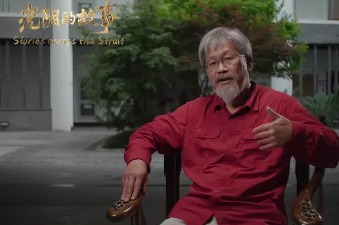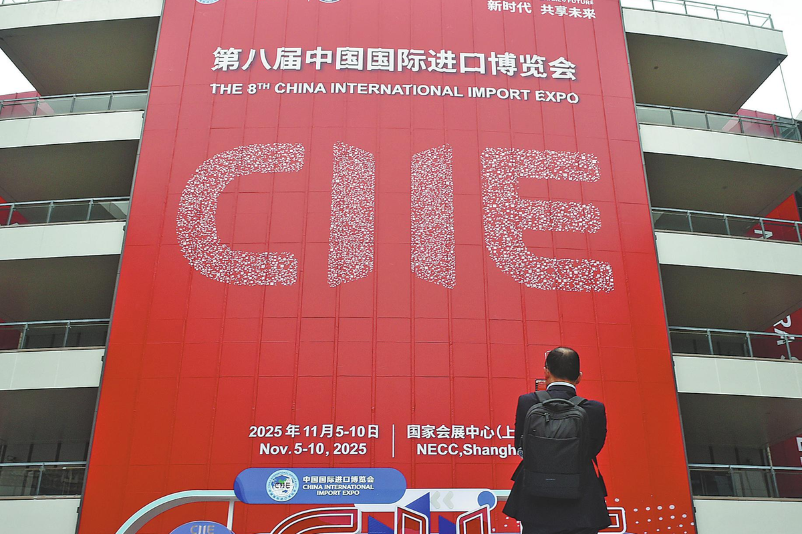Hold fast


Thanks to introduction of favorable policies, the pressure on foreign investment has been alleviated
Opening to the outside world is a fundamental national policy for China, of which a primary task is to effectively utilize foreign investment. Since the launch of reform and opening-up, especially after joining the World Trade Organization, foreign-invested companies have become an integral part of China's economy, playing a crucial role in China's rapid integration into the global value chain.
However, foreign investment flows into China are under short-term pressure due to uncertainties in the external environment, including in-depth restructuring of the global value chain, supply-demand imbalances, and high financing costs.
During the global economic downturn, industry chain changes driven by nearshoring and friendshoring have had a negative impact on China's foreign investment and trade. Global supply-demand imbalances are mainly caused by tariff barriers and supply chain disruptions, rooted in international trade frictions and geopolitical risks.
Due to the US Federal Reserve's frequent and aggressive interest rate hikes, financing costs have been pushed up on a global scope. In response, major world economies have been forced into a cycle of rate rises, resulting in global financial market volatility and a lack of investor confidence, which in turn has reduced cross-border investment and consumption.
These adverse factors have led to a negative market outlook for foreign investment. 2023 saw sluggish global cross-border direct investment, with a nine percent drop in flows to emerging markets and developing countries.
According to the Ministry of Commerce, the actual use of foreign direct investment in China fell by 8 percent in 2023, and by 26.1 percent year-on-year in the first quarter of 2024. It is expected that foreign investment flows into China will remain under pressure this year.
In response to this situation, China has been consistently releasing favorable policies and has taken strong measures to stabilize foreign investment. The effects of the efforts are showing: foreign investment is stabilizing in quantity and improving in quality, and the short-term pressure has been alleviated.
In August 2023, the State Council, China's Cabinet, issued Opinions on Further Optimizing the Foreign Investment Environment and Increasing Efforts to Attract Foreign Investment, (referred to as the "24-point guidelines"), which includes 59 measures in 24 areas. Six months on, more than 60 percent of the specific measures have been implemented or have made significant progress in implementation, contributing to the stabilization of foreign investment.
Since the beginning of this year, China has continued to release favorable foreign investment policies. In this year's government work report, the Chinese government calls for further shortening the negative list for foreign investment and abolishing all market access restrictions on foreign investment in manufacturing, as well as expanding the Catalog of Encouraged Industries for Foreign Investment.
On March 19, the State Council issued the Action Plan for Steadily Advancing High-level Opening up and Making Greater Efforts to Attract and Utilize Foreign Investment, which outlines 24 measures in five areas to address specific obstacles and issues faced by foreign investors seeking to integrate into China's new development pattern, providing further policy support for stabilizing and improving the quality of foreign investment in China.
With these policies, the quality of foreign investment inflows in China is higher and higher, manifested in some emerging industries and advanced technology sectors.
First, the share of high-tech investment in total actual use of FDI has significantly increased. In 2023, foreign investment in manufacturing grew by 20.5 percent year-on-year, in which high-tech manufacturing investment was up 40.6 percent. Investment in high-tech sectors accounted for 34.7 percent of total. In the first quarter of 2024, the share of investment in the manufacturing and high-tech manufacturing sectors rose by 2.3 and 2.2 percentage points, respectively, compared to the same period last year.
Second, more and more foreign investment projects feature cutting-edge technological innovation. Major foreign companies such as BASF, ExxonMobil and Siemens have established innovation and research and development centers in Guangdong province. These are great examples of win-win cooperation, which are made possible by the pro-innovation environment in the region and the multinational giants' willingness to grow along with China's high-quality development.
Additionally, many foreign companies in Jiangsu province are actively reinvesting their retained earnings in China, targeting high-tech industries such as photovoltaics, special vessels, automobile manufacturing, and electronic component manufacturing.
Third, China's high quality economic development has provided strong support for the high quality foreign investment inflows. China has the world's largest and most complete industrial system as well as a huge talent pool. China is also continuously optimizing its business environment and developing relevant regulatory frameworks, manifested in rises in the World Bank's global business climate rankings.
As the world's second-largest consumer market with the world's largest middle-income group, China has enormous potential in consumer spending and is seeing a continuous upgrade in consumer spending structure. As the world's second-largest economy, China is systemically important for the world economy and its global economic supply-demand balance.
Apart from its high quality, the quantity of foreign investment is also showing a stable trend.
First, historical data show that the scale of FDI inflows into China remains at a relatively high level. The actual use of FDI declined in 2023 due to uncertainties in the external environment and the negative market expectations for foreign investment, but historically it was only behind 2021 and 2022. The decline in the first quarter of 2024 is mainly because of the high base of the first quarter of 2023, which recorded the largest foreign investment inflow in history.
Second, the number of newly established foreign-invested companies is surging, laying a foundation for the recovery of FDI inflows in China. The number of newly established foreign companies in China soared by 39.7 percent in 2023, and by 20.7 percent year-on-year in the first quarter of 2024.
Third, China is seeing net inflows of FDI. According to the State Administration of Foreign Exchange, China achieved a net inflow of FDI in the fourth quarter of 2023, a rapid turnaround from the net outflow in the third quarter.
In terms of FDI structure, a net total of $62.1 billion in equity-based FDI flowed into China in 2023, and $19 billion in the first quarter of 2024, showing a growing trend of investing in China and owning renminbi assets.
The author is an associate researcher at the China Center for International Economic Exchanges. The author contributed this article to China Watch, a think tank powered by China Daily.The views do not necessarily reflect those of China Daily.
Contact the editor at editor@chinawatch.cn.


































